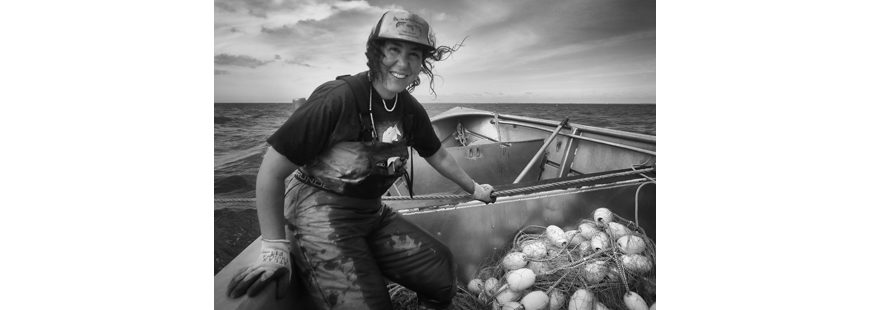Photo by Joanne Teasdale
I am fairly certain that my ancestors found a home in Bristol Bay because of the salmon. It is hard to say exactly when they arrived, but I know that it is the Naknek River salmon that sustained them. There are many waves of peopling that have occurred in Bristol Bay in different time periods, and each wave has been centered around salmon.
The hands of the region’s first people’s descendants, Yup’ik, Dena’ina and Sugpiaq, cut salmon into food that provides for them all winter long. Sport anglers come from all over the world to witness, hold and have their catch cooked-to-order only hours after landing their fish. Commercial fishers have difficulty keeping up with picking the volume of salmon caught in their nets when the salmon are running hard to return to their natal streams to spawn and die. The salmon of Bristol Bay have given life and livelihood to all who participate in the sockeye salmon fishery, but the reach and influence of Bristol Bay salmon goes far beyond the lives of those who have been fortunate enough to experience the bright energy that radiates from the run first hand.
From these hands many industries are supported by the gear, equipment and services required for each user group. For those who need dollar metrics to recognize the value associated with a resource, the proof is not hard to see when it comes to Bristol Bay salmon. 15,000 U.S. jobs are supported by this fishery, which generates $658 million in labor income, is worth over $1.5 billion annually and happens with no front-end investment because the salmon grow themselves. Unfortunately, this last great wild salmon run, which continues to return record-sized runs upwards of 60 million sockeye per year, even after roughly 140 years of commercial harvest, stands to be displaced by people whose vision is tunneled into seeing stock ticker values and corporate balance sheets before human lives.
The Pebble project, located at the headwaters of the two most prolific salmon river systems in Bristol Bay, stands to undo what nature has perfectly nurtured since the last ice age. Northern Dynasty Minerals, a junior mining company under the name of Pebble Limited Partnership, has no partner to build out Pebble, but they initiated the federal permitting process, and no agency under our current administration called that into question. Currently the permitting is in the phase of reviewing a Draft Environmental Impact Statement (DEIS) that has been prepared by the US Army Corps of Engineers (USACE), the agency responsible for issuing dredge and fill permits. The public has an opportunity to weigh in on a comment period that ends on May 30th. After that, only two more steps remain in the National Environmental Policy Act (NEPA) federal permitting process, the final EIS and the Record of Decision (ROD). The ROD will then go to the State of Alaska for consideration in the form of a Joint ROD (JROD), and if the state signs off on the JROD, the permitting from that point forward has proven to be simply procedural at best.
Sometimes it seems as if our lawmakers and decision makers would like to see the last great run of wild salmon and its habitat destroyed so that access to the land will no longer be an impediment to developments that would alter landscape and waterways and render them devoid of life. There is no way to return this salmon habitat to its original state upon closure of the mine, and history has proven that millions of dollars will not restore the once unfathomable salmon runs of the Columbia River and other systems that have lost their salmon to industry, dams and death by a thousand cuts.
As mentioned before, I was born to a family whose lifeblood comes from the Naknek River, but my great-grandfather, Paul Chukan, introduced our line to the commercial fishery. My children and nieces are fifth-generation commercial fishermen. I began to learn the hard work of set-netting at the age of 10 and was able to put myself through college debt-free. Now my fishing proceeds enable me to support my family, and my daughter is saving her earnings to pay for her education. While my life and the way I have been able to live it mean a lot to me, and I do not want to see it altered by a short-term and finite mine, I am just one of many who would be impacted by this project. It is also important to note that not only the lives of Bristol Bay fishermen and residents stand to be impacted. The value of the entire Alaska seafood brand is at risk by association and perception. Many fear that if the mine is permitted and digging begins, seafood customers around the world will view Alaska waters as less than pristine because of the potential disaster of a tailings dam breach.
There are too many considerations to elaborate upon, including the deceit of Pebble Limited Partnership having the USACE review a mine plan that is far smaller than the size of the ore body (1.5 billion tons of ore to the estimated ore body size of 11 billion tons). Despite the thousands of pages in the DEIS, including appendices, there are still major gaps in risks assessed. The comment period of 90 days is too short to review a document that is so large and contains so much to consider. This project grows weightier as it draws closer to becoming a reality, and it is my hope, along with others who have been working to protect the priceless salmon habitat of Bristol Bay, that we will continue to grow our numbers to the point that our will has to be heard and heeded. Please join us in participating in the process. Submit your comments opposing the Pebble project before May 30th.


